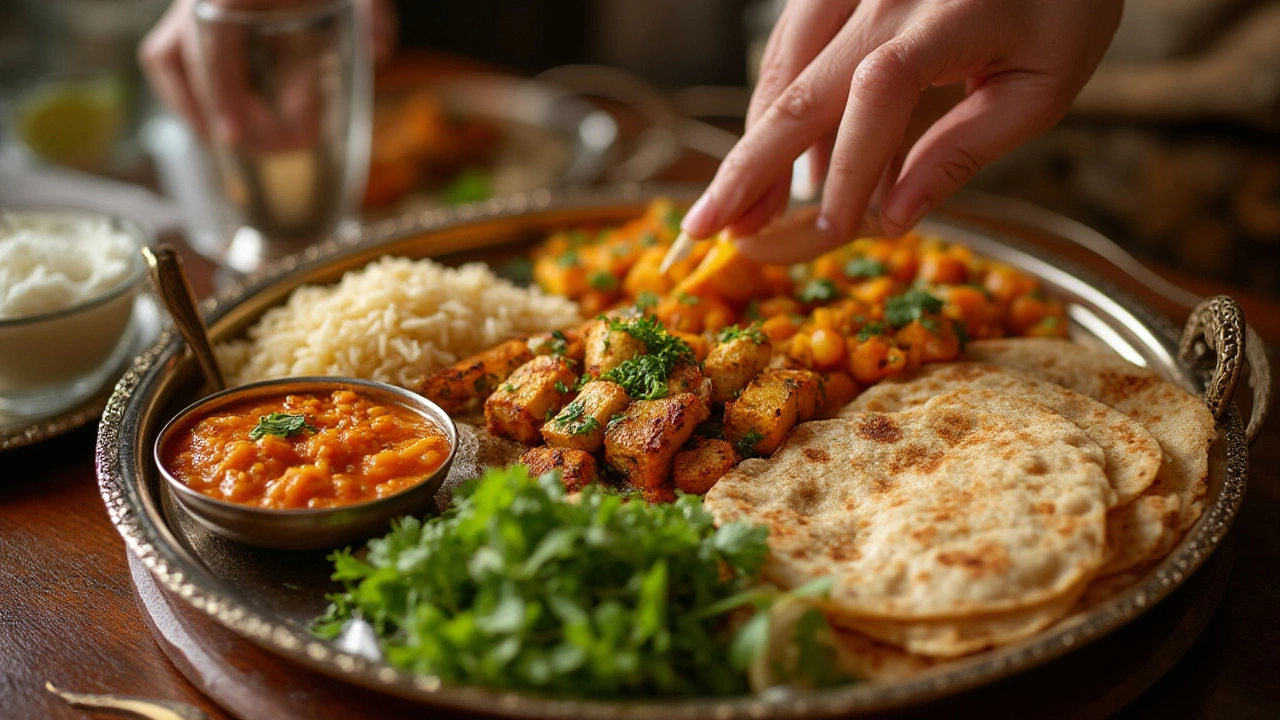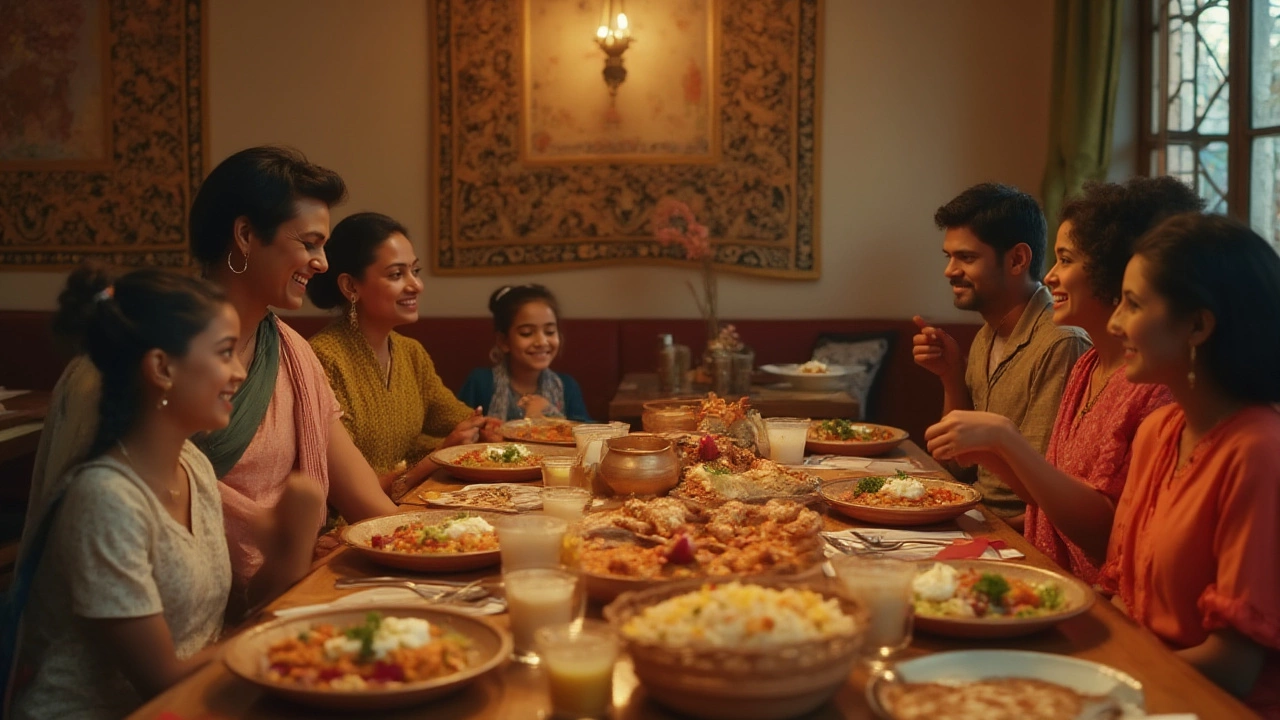If you’ve ever stared at a glossy Indian restaurant menu and thought, “How do I order healthy here without missing out on flavor?”, you’re not alone. The smells, the creamy sauces, those deep-fried temptations—just picking a dish can feel risky if you’re watching your health. But what if the healthiest thing to eat in an Indian restaurant is actually tastier, more colorful, and more filling than you expect? Most people don’t realize how many dishes are naturally good for you, if you know where to look (and what to skip).
Understanding What Makes Indian Food Healthy (Or Not)
Indian food is a burst of spices, veggies, grains, and ancient nutrition wisdom. But with restaurant cooking, hidden oils, ghee, and cream can sneak calories into dishes that are otherwise healthy. The trick is figuring out what’s really happening in the kitchen. Classic Indian home cooking typically uses more vegetables, lentils, and mild cooking methods—steaming, boiling, light sautéing—while restaurant fare sometimes leans heavier, adding butter, fried onions, and lots of salt to please your taste buds.
Let’s talk nutrition basics Indian-style: almost every menu has lentil-based dals—rich in plant protein, bursting with flavor, and usually low in fat unless swimming in oil. Same goes for tandoori items: chicken, fish, or paneer cooked in a blazing-hot clay oven, with most of the fat dripped away, and marinated in yogurt, herbs, and spices. People often think curries are the healthiest pick, but many restaurant curries blend in cream or coconut milk for richness. If you’re trying to eat lean, look for “dry” vegetable or dhal dishes, or anything grilled. Flavor-wise, you’re not missing out: turmeric, cumin, ginger, and chili bring enough heat and zing to light up your meal (and even boost digestion).
On the flip side, what makes a typical Indian restaurant meal less healthy? Appetizers like pakoras and samosas are deep-fried. Sauces like makhani (creamy tomato), korma (nutty, rich), or malai gravies tend to use loads of cream or butter. Dishes labeled “butter,” “malai,” “makhani,” or “paneer tikka masala” nearly always pack more calories and saturated fats than you’d guess. And breads—naan, paratha, poori—are irresistible but usually high in carbs and either made with white flour or brushed with ghee. If you're watching your blood sugar or aiming to cut back on fat, these are the ones to minimize or share.
The Best Choices: What to Actually Order
If you want the healthiest option in an Indian restaurant, go for tandoori dishes, dal tadka, bhindi masala, or a simple vegetable sabzi. Tandoori chicken (or fish, or shrimp) is marinated in yogurt and spices, then cooked in the tandoor to richly charred perfection, all with barely any fat. No batter, no deep frying, and the flavor comes from herbs and smoke, not from added oils. Vegetarian? Dal tadka is a hearty yellow lentil stew, filling and loaded with fiber and protein. It’s usually finished with a sizzling touch of cumin and garlic, which adds aroma without added creaminess. Bhindi masala—okra sautéed with onions and tomatoes—is often overlooked, but it’s one of the most nourishing and light choices out there. Okra is high in vitamins and keeps you full.
Give kachumber salad a try—this is an Indian chopped salad of cucumber, tomatoes, onions, lemon juice, and cilantro. It’s peppy, refreshing, and gives you vitamins without oil. Another happy surprise? Rajma (kidney bean curry) and chana masala (chickpea curry) are super filling, high protein, and if made without extra cream or ghee, a solid bet for your heart and stomach. Order them “dry” (with less gravy) or ask your server if they can skip the cream for you.
Lovers of Indian breads, don’t worry. You can still enjoy roti, especially if it’s made from whole wheat. Rotis are typically cooked on a flat griddle with only a touch of oil or ghee, if any—so you skip out on the heavy fats and refined flours found in naan. But skip the papadam trap: though lentil-based, these crunchy crackers are often fried in restaurants, making them a lightweight but greasy starter.
If you’re into yogurt, raita (a cooling yogurt dish mixed with cucumber or mint) is a great sidekick—it cuts the heat and adds probiotics for digestion. Just skip the “boondi raita” (the one with little fried balls) if you’re keeping things light.
Smart Swaps and Menu Hacks
Ordering healthy food at an Indian restaurant is as much about smart swaps as it is about picking the right items. Don’t be shy—ask your server for less oil, or to skip the cream or butter. Indian chefs are all about flexibility; usually, they’re happy to leave out ghee or swap in a light touch if you ask. Another trick? If you’re getting dal, ask for it “dal tadka” style—this means it’s finished with a quick fry of garlic, cumin, and chilies, but you can request the tadka with less oil. For curries, check if there’s a tomato-based version instead of a creamy one—think “dhansak” or “madras” over “korma” or “makhani.”
Pro tip: share main entrees and order more vegetable-based side dishes. Indian menus are meant for mixing and matching, so getting one meat dish, one dal, and two vegetable curries is going to be way lighter (and more fun) than everyone ordering heavy mains. A bowl of plain yogurt or a side of fresh lemon wedges also helps balance out spicy dishes—and skipping the rice or splitting it with the table cuts down on carbs.
Craving something crunchy? Instead of fried pakoras, go for tandoori mushrooms or paneer tikka as an appetizer. You get that charred outside and tender inside, with hardly any excess oil.
If you’re a sweet tooth, try ending your meal with plain mango or a small bowl of fruit, instead of syrupy desserts like gulab jamun or ras malai. Most Indian sweets in restaurants go heavy on condensed milk, sugar, and ghee—delicious, but really dense. Sometimes a cooling kulfi (ice cream made with real fruit and nuts) in a mini portion can be a lighter treat.

Special Diets: Vegetarian, Vegan, and Gluten-Free
Indian restaurants are actually a dream for vegetarians and vegans, way more so than most other world cuisines. Lentil-based dals, chana masala, baingan bharta (smoked eggplant), aloo gobi (potato and cauliflower), and cabbage sabzi are all vegan-friendly as long as you ask for no ghee or dairy. Swap out naan for roti, and you’re all set. If you’re gluten-free, stick with rice or millet-based breads like bajra or jowar rotis, or go for dosa (where available)—these are made from lentil and rice flour, not wheat. Sambar (a South Indian lentil vegetable stew) is also naturally gluten and dairy-free, with tons of flavor and fiber.
For those steering clear of dairy, remember that paneer is off limits, and many curries have cream or yogurt, so ask first. Restaurant food often uses ghee liberally, but oil-based versions are usually an easy swap if you mention it. It’s all about letting the server know what’s up—they’ll usually guide you to the best options or alert the kitchen.
One lesser-known tip: check for regional specialties on the menu. South Indian dishes (like rasam, uttapam, avial, idli, or sambhar) are light, high in veggies, and use little to no dairy or wheat, giving loads of naturally vegan or gluten-free choices. North Indian menus lean heavier on cream, ghee, and paneer—but with a little creativity (and confidence to ask), you’ll do just fine.
Nutrition Facts: How Indian Restaurant Food Measures Up
Time for real numbers. A typical tandoori chicken breast is about 250 calories (without sides) and has nearly zero carbs, while packing in protein and iron. Dal tadka (one cup) clocks in at around 170 calories and packs over 10 grams of protein, with filling lentil fiber. Chana masala gives you about 200 calories per cup, along with potassium, magnesium, and soluble fiber that helps support heart health.
Contrast this with butter chicken—one serving can be upwards of 500–600 calories, mostly from cream and butter, not from protein. Paneer tikka masala rivals that, with nearly 450 calories per serving and a hefty chunk of that from dairy fat. Even vegetable kormas, with their creamy coconut or cashew bases, can surprise you with 400–500 calories per serving. Naan bread varies, but a single garlic naan could top 300 calories (before you add the butter).
What about salt? Indian restaurant food tends to be high in sodium, especially in gravies and pickles. If you’re sensitive to salt, ask for less or skip the pickle plate. When in doubt, drink lots of water, and eat more of the fresh salads or side vegetables.
Not sure what’s in your dish? Apps like MyFitnessPal or Cronometer have user-generated databases for Indian cuisine—handy if you’re tracking nutrition. Just remember: home-style versions almost always have less fat, sugar, and salt than restaurant adaptations. If you really love the spices but want total control, try recreating favorites at home, using less oil and more veggies.
Healthy and Happy: How to Enjoy Your Indian Restaurant Meal
The healthiest Indian restaurant food is not about ordering the dullest thing on the menu. It’s about finding that sweet spot where taste, color, and nutrition all blend—and yes, you can have it all. Start with a bold salad or raita, load your plate with grilled or tandoori meats or veggies, and fill up on dals and dry sabzis. Double the fresh flavors, ask for tweaks, and savor every bite.
If you do splurge occasionally on a creamy curry or gooey naan, don’t stress—balance is the real secret. Next time, steer your meal toward a *healthiest Indian restaurant food* pick, and you’ll discover flavor doesn’t have to come at the expense of your wellbeing. The best part about Indian cuisine is that it’s built to make you feel satisfied, so you can leave the table feeling good—full, but not weighed down.
The next time someone claims you can’t eat healthy in an Indian restaurant, hand them a menu and ask if they’ve ever really tried the dal tadka or the tandoori broccolini. Because, trust me, they’re missing out—and now, you know exactly what to order.
